movie
*Weaving Machine
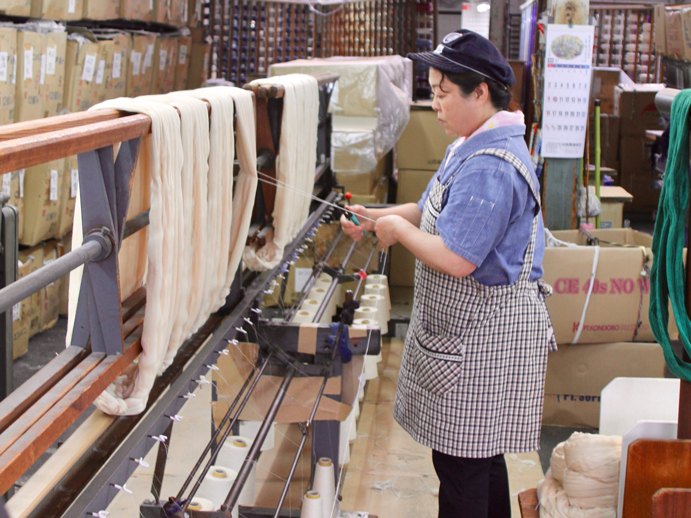
Hank Up
Yarns are reeled to make hanks. Then yarns are unraveled to be dyed.

DYEING / Hank Dyeing
Reeled yarns are placed in the pot to be refined. Then yarns are dyed in indigo blue or colors from trees and plants. Warp is usually dyed using the rope dyeing method for denim.

Rope Dyeing
Jeans become whiter and weathered as being worn. The center of the yarns are not dyed so as to create that “weathered taste.”

SIZING
Yarns are coated with starch paste or synthetic glue to prevent from being cut while woven by the weaving machine.
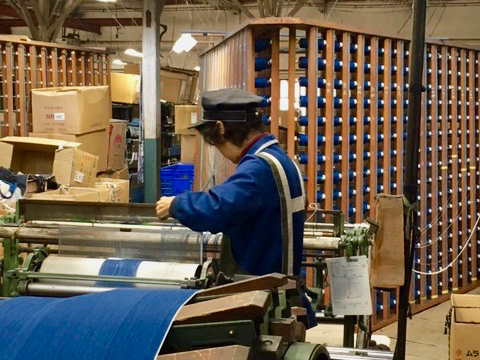
WARPING
After applying starch to yarns, yarns are reeled on a 2 meter wide big beam. For producing ordinary denim, approximately 3,000 yarns are reeled.
Heald Shaft(SETTING WARPS)
A yarn is passed through a heald, a wire with a small hole. If there are 3,000 warps, 3,000 yarns are passed through the heald manually. Setting warps is not an easy task because it takes almost a day for an experienced craftsman to set warps. After this process, preparation for weaving denim is complete.
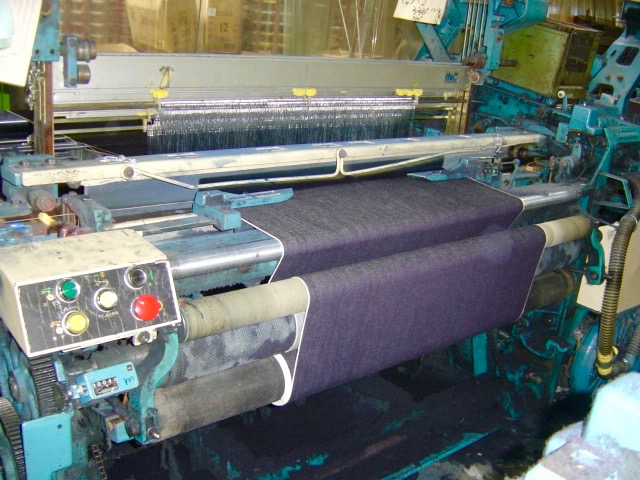
WEAVING
At Nihon Menpu Textile, weft yarns are supplied by a boat-shaped shuttle for weaving.
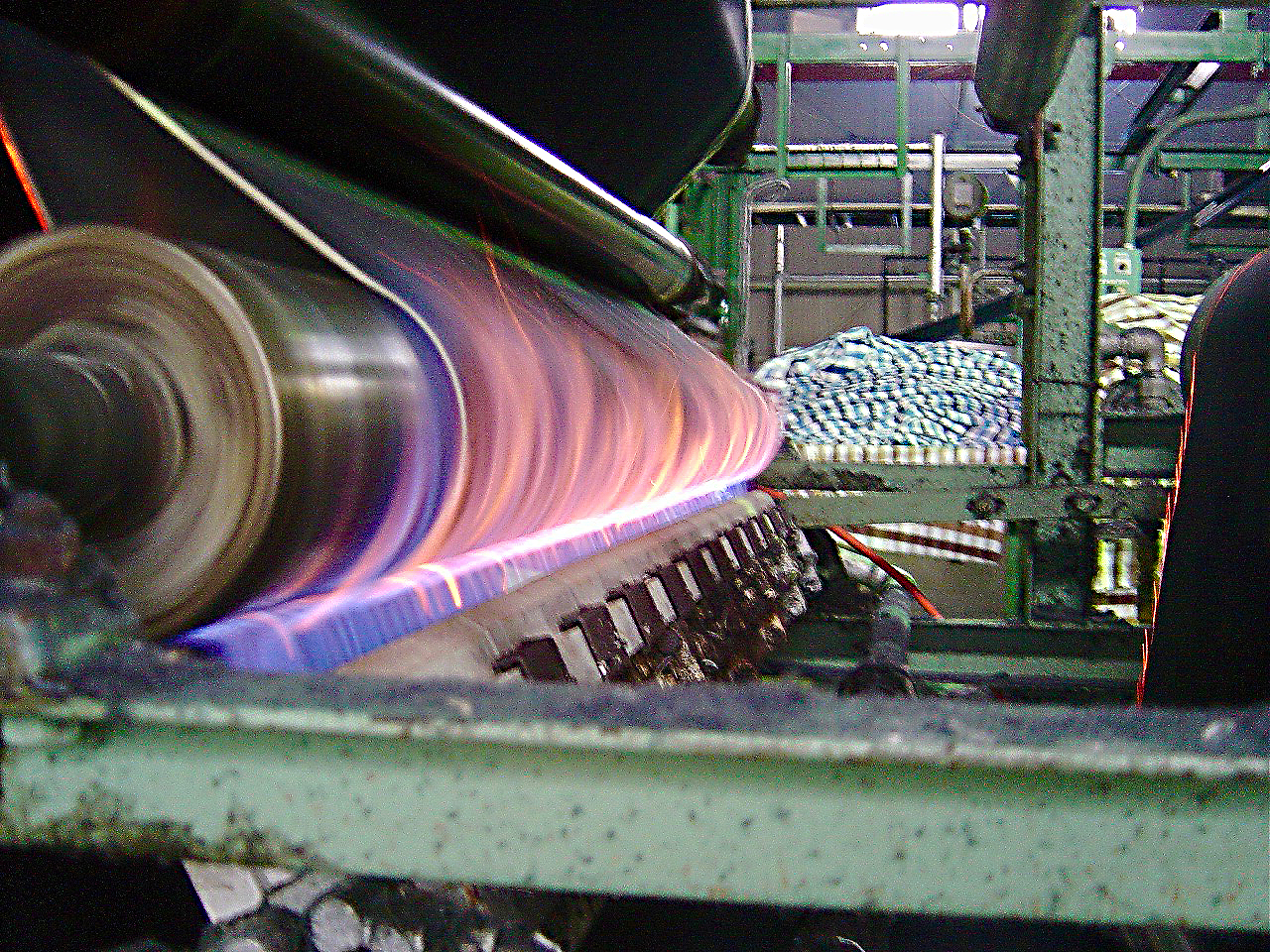
FINISHING (SANFORIZED)
Finishing process applies a non-shrink treatment to the denim to prevent shrinkage during washing. The non-shrink effect is applied by letting fabric going through the rubber belt shrinkage unit. There are other treatments such as gas-burning of the denim surface and skewing to prevent the denim from becoming skewed.
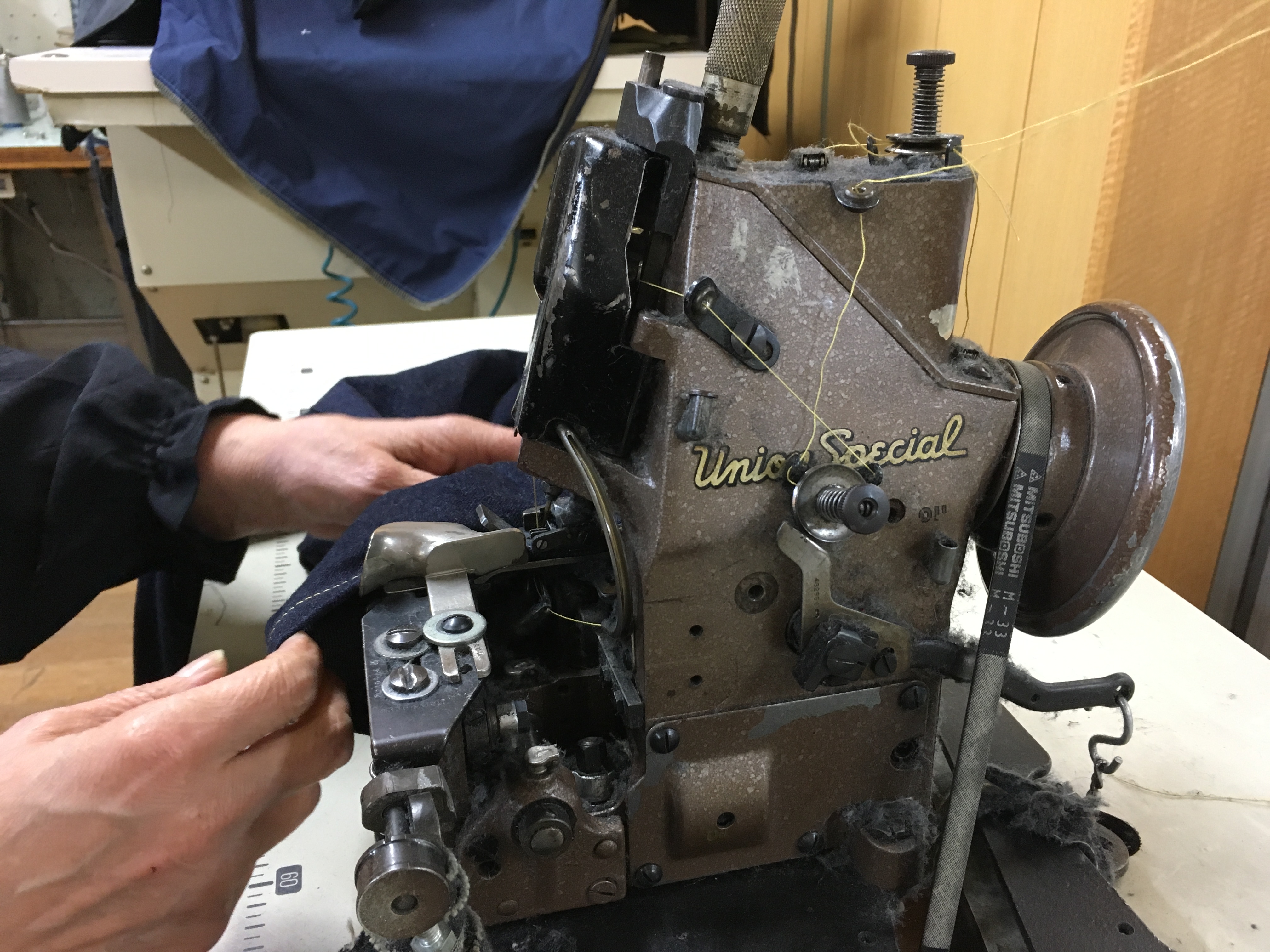
Organize Processing
Complete fabric is cut into 20 to 30 parts, and the cut parts are carefully combined. Various and special types of sewing are used for denim, such as double stitch and rolled seams.
※ *Cutting and sewing processes are not conducted at our company.
※ *Cutting and sewing processes are not conducted at our company.

WASH
This is the final process. The washing process is inevitable for jeans. Finishing touches are added to jeans by washing with water, rubbing with pumice stones, or bleaching with chlorine.

